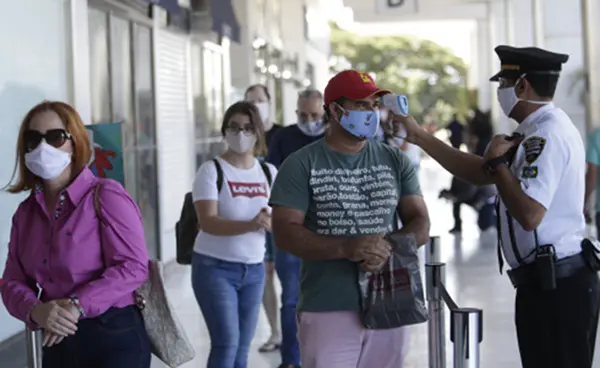South Korea's Finance Ministry on Monday revised down its 2015 growth outlook to 3.8 percent from an earlier forecast of 4 percent due to sour consumer sentiment and economic uncertainties.
The Finance Ministry forecast that the economy would expand 3.4 percent in 2014 before growing 3.8 percent in 2015. The 2015 figure is lower than the ministry's initial estimate and the Bank of Korea (BOK)'s forecast of 3.9 percent. The BOK is expected to downgrade its estimate next month when it plans to unveil its revised outlook.
The economy is expected to recover more or less from the weak private consumption caused by the April ferry sinking disaster, but consumer sentiment would remain sour, the ministry said.
The maritime disaster, which left more than 300 people, two thirds of them high school students, dead or missing, rattled the economy as consumers refrained from entertainment and travel amid a paroxysm of grief spreading in the entire country.
Uncertainties lingered about the U.S. Federal Reserve's monetary policy, which is expected to be normalized from the near- zero policy rate. The Fed said it would be patient in interest rate hikes, seeking to relieve concerns about its policy direction.
The expected depreciation of the Japanese yen was feared to dent competitiveness of South Korean exporters in 2015. At home, massive household debts and dampening competitive edge of South Korean manufacturers were projected to serve as negative factors facing the economy.
The ministry lifted its 2015 outlook for the consumer price inflation to 2 percent after it raised cigarette prices by a whopping 80 percent. Farm goods prices were forecast to push up the headline inflation, but lower global oil prices would ease inflationary pressures, the ministry said.
Global crude oil prices fell below 60 U.S. dollars a barrel after the Organization for Petroleum Exporting Countries (OPEC) refrained from reducing production, boosting worries about supply glut.
Outlooks for private consumption and facility investment were forecast to expand 3 percent and 5.8 percent each in 2015. Current account surplus was expected to reach 82 billion dollars next year as exports and imports were predicted to expand 3.7 percent and 3. 2 percent each.
The ministry plans to boost the sluggish economy by reforming economic structure next year. It would draw up measures to overhaul pension plans for military officers and teachers, while improving the management of assets owned by the national pension scheme.
Investment projects in the private sector would be streamlined, and business creation by those in their 20s would be sponsored by state funds. Regulations on private equity funds (PEF) would be enhanced, and corporate bond market would be activated by deregulations.
Comprehensive package of measures for the flexible labor market would be drawn up next year, and plan to deal with aging population and low birth rate would be advanced.
The ministry plans to frontload 58 percent of its 2015 budget in the first half of next year to speed up economic recovery, while gradually raising minimum wage to bolster private consumption.
Environment where convergence between technologies and industries would be created as a new growth engine, and assistance would be provided for the boosting of Internet of Things (IoT) to boost the tech sector. A package of measures would be drawn up next year to help manufacturers recover competitiveness.
South Korea would actively participate in negotiations for various free trade agreements (FTA), including those with China and Japan, the Regional Comprehensive Economic Partnership (RCEP) and the Trans-Pacific Partnership (TPP).
To weaken burden for home purchases, the country plans to help private home developers enter the home lease market via deregulations. Short-term, floating-rate mortgage loans of about 40 trillion won (36 billion U.S. dollars) would be changed into long-term, fixed-rate loans to reduce burden for interest payments.
 简体中文
简体中文

